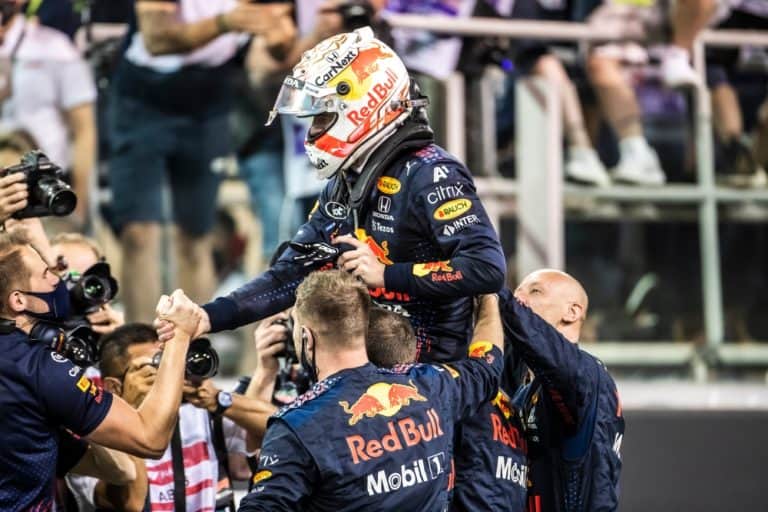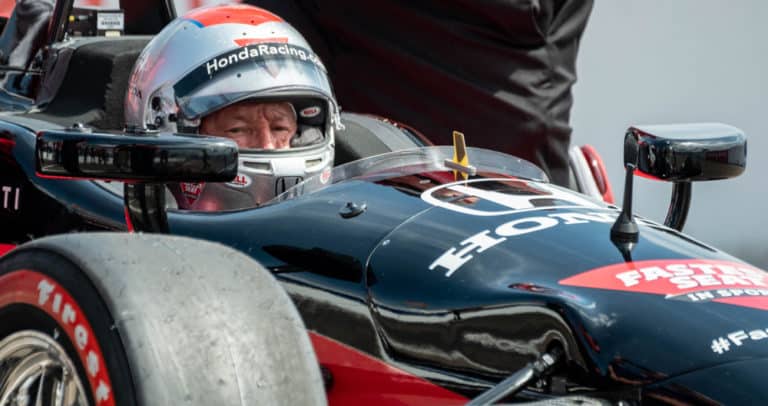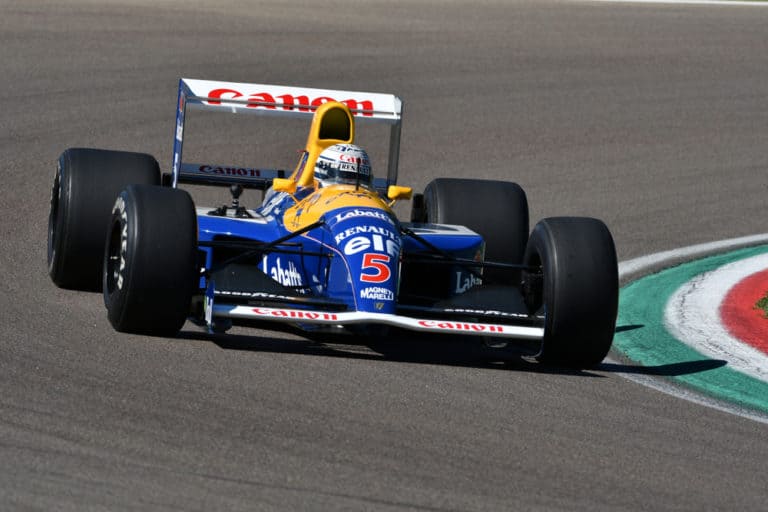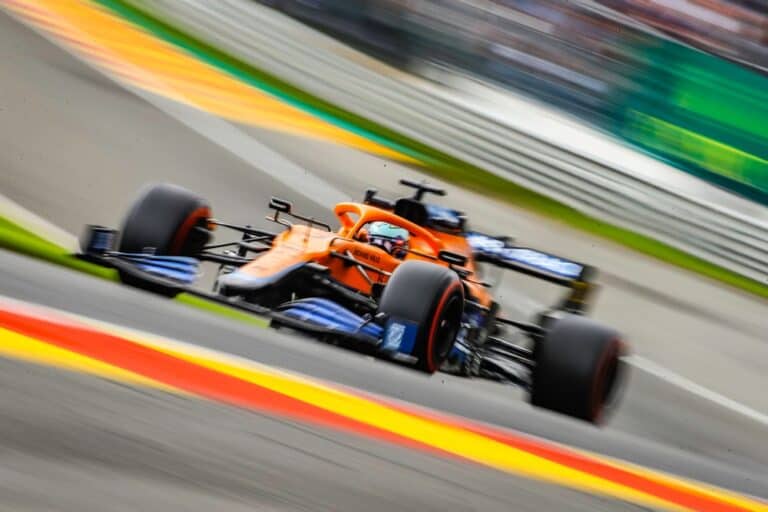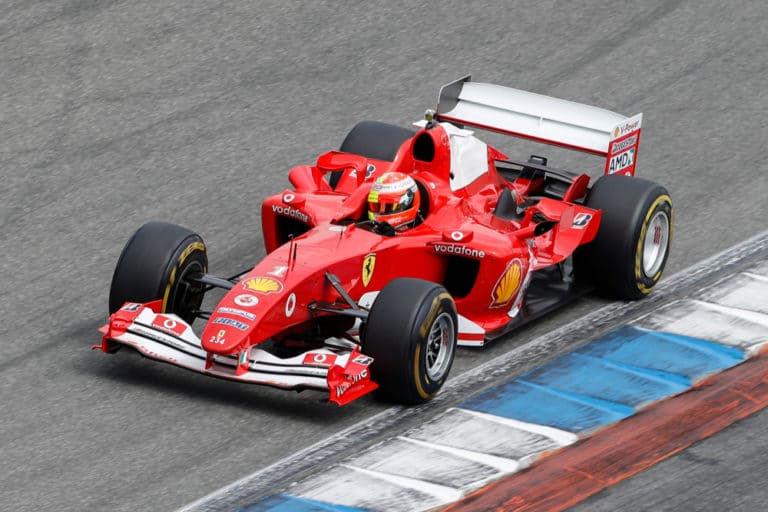Image editorial credit: joharhu / Shutterstock.com
Have you ever looked at an F1 tire and wondered why they have no tread? It’s a bit of a weird thing at first glance, mainly because having no tread on your tires is considered extremely dangerous on-road cars.
F1 tires have no treads because it provides a better grip with the track surface in dry conditions. Better grip makes the car more stable, which is vital in a sport like F1. However, in rainy conditions, teams will often opt for tires with treads.
F1 tires have no treads because it improves their ability to race. Tires without treads are faster than ones with treads. Furthermore, the softer the tire is, the quicker the car can go. This article will explore why F1 tires have no treads, the benefits of the different types of tires used in an F1 race, and why F1 cars run with treaded tires in wet conditions.
The Benefits Of Not Having Treads On A Tire
Formula 1 is a sport of extremely fine margins. If a driver is even just a few kilograms overweight, they can add a few split seconds onto their team. Reducing the size of something on the car can reduce the car’s drag and give a team a tiny but significant advantage over their rivals. This shows you how much attention to detail is required in the sport.
When it comes to tires, it is not any different. This is because tires do not have that much contact with the road than their surface area. Therefore, it is essential to maximize the benefit of the area that touches the track. When you have grooves (treads) in your tires, you are now minimizing the amount of tire that encounters the racing track.
As a result, you are getting less grip because less surface area equals less traction. Using slick tires means maximizing rubber that touches the road, which is suitable for racing.
Smooth tires allow for more rubber to come into contact with the surface of the track. The more rubber you have in contact with the track, the better grip the car has because of the better traction. This makes racing easier and faster.
Slick tires are also useful because they wear at a more even rate than tires with treads. With no treads on the tires, even when they start wearing down, the difference between them are that is worn and the area that isn’t will not be that significant.
The Different Types Of Slick F1 Tires
Pirelli, who manufacture the tires for F1, produces five compounds for the slick tires. These range from C1-C5, with C1 being the hardest and C5 being the softest. They will choose three of these particular compounds for the race weekend, and from that, the lowest compound will be marked as the hard tire for the race weekend and the highest one as the soft compound. The compound in between the two will be the medium compound.
A driver will have to use at least two different compounds within the race, but this does not include the tires used for wet weather. For example, a driver may start with the soft compound and then come into the pit stops and change to the hard compound for the remainder of the race.
Each compound has its pros and cons which you can see in the table below. It is important to note that durability is a big issue. This is because the more often you have to go into the pits to change your tires, the more time you lose. Pit stops often last between 20-30 seconds which can make a huge difference in an F1 race.
| Hard Compound | Medium Compound | Soft Compound | |
| Pros | Extremely durable. | Quicker than the hard compound. | Quickest compound. |
| Cons | Slower than the others. | Semi-durable. | Non-durable. |
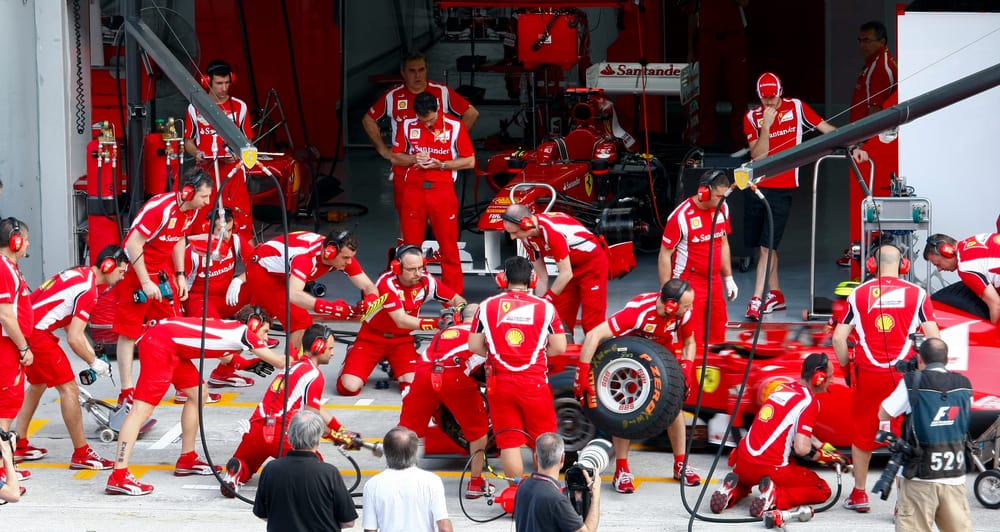
What If Formula 1 Tires Had Treads?
Well, they are actually already are F1 tires with treads. These tires are used in rainy conditions because, as you can imagine, the issue with tires that have no treads is that they do not displace any water.
Having no treads is fine when you are racing in dry conditions, but as soon as the rain starts to fall, they become unusable. This is fine for F1 because, unlike your standard road car, you can change an F1 tire in a few seconds at a pit stop, which you can’t do with an everyday vehicle.
For this reason, the F1 tire manufacturer Pirelli produces two tires with treads on them that can be used in wet conditions. These are the intermediate tires, which have green writing on them, and the wet tires, with blue writing.
According to Pirelli, the intermediate tires are “the most versatile of the rain tires.” They also state that “This tire evacuates 30 liters of water per second per tire at 300kph.” These tires are essentially a crossover between the full treaded wet tires and the tires without treads used in dry conditions. They provide some water displacement while still allowing for a decent amount of adhesion to the track.
If these tires are used long enough, they become very similar to the regular slick tires. An excellent example of these tires’ usage was when Lewis Hamilton won the Turkish Grand Prix in treacherous conditions in 2020. He raced so many laps on the same set of intermediate tires that most of the tread had been worn away by the time he reached the chequered flag.
The full wet tires, on the other hand, are entirely treaded. As a result, they displace much more water and are therefore used when standing water on the track. Pirelli says, “These tires can evacuate 85 liters of water per second per tire at 300kph.” These tires are 10mm thicker than the slick tires and are designed to prevent aquaplaning, which can be extremely dangerous when driving at such a high speed.
| Intermediate Tires | Full Wet Tires | |
| Usage | On a drying track with some moisture. | On a wet track with standing water. |
| Water Displacement | 30L per second | 85L per second |
Tires that have treads are necessary for wet conditions, but the trade-off is that they are not as quick as the slick tires, which means they are only used when absolutely necessary.
Furthermore, using wet tires in dry conditions is bad for tire performance, because the treads produce extra friction. When it rains, the water cools this down, but there is nothing to cool the tires down when there is no water on the track. Therefore, the degradation of the tires is accelerated.
You can learn more about all the different tires produced by Pirelli for Formula 1 here.
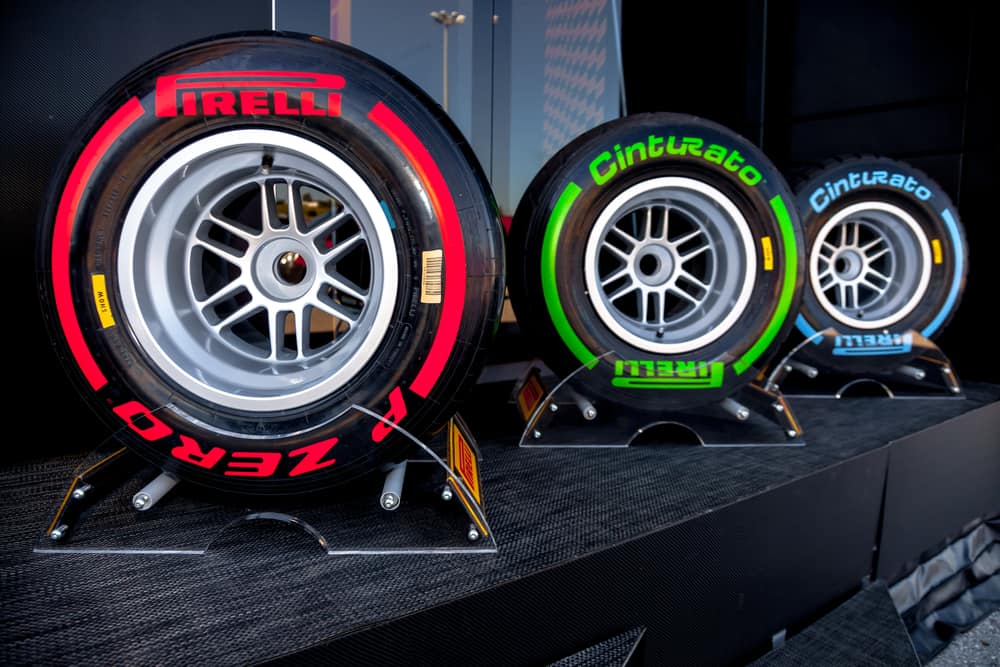
Conclusion
F1 tires have no treads because it makes them faster. The more contact the rubber has with the tarmac, the more traction it gets, which increases the speed and ability to corner properly. Therefore, using tires with no treads makes a lot of sense in a sport solely centered around making the cars as fast as possible.
However, when the rain falls, the treads come out. Without changing tires in wet conditions, it would almost be impossible for F1 cars to drive because the water would disrupt the contact between the tires and the track. Having treads on tires prevents this as they help displace water, which means the tires can grip, which means the cars can stay on the track.

